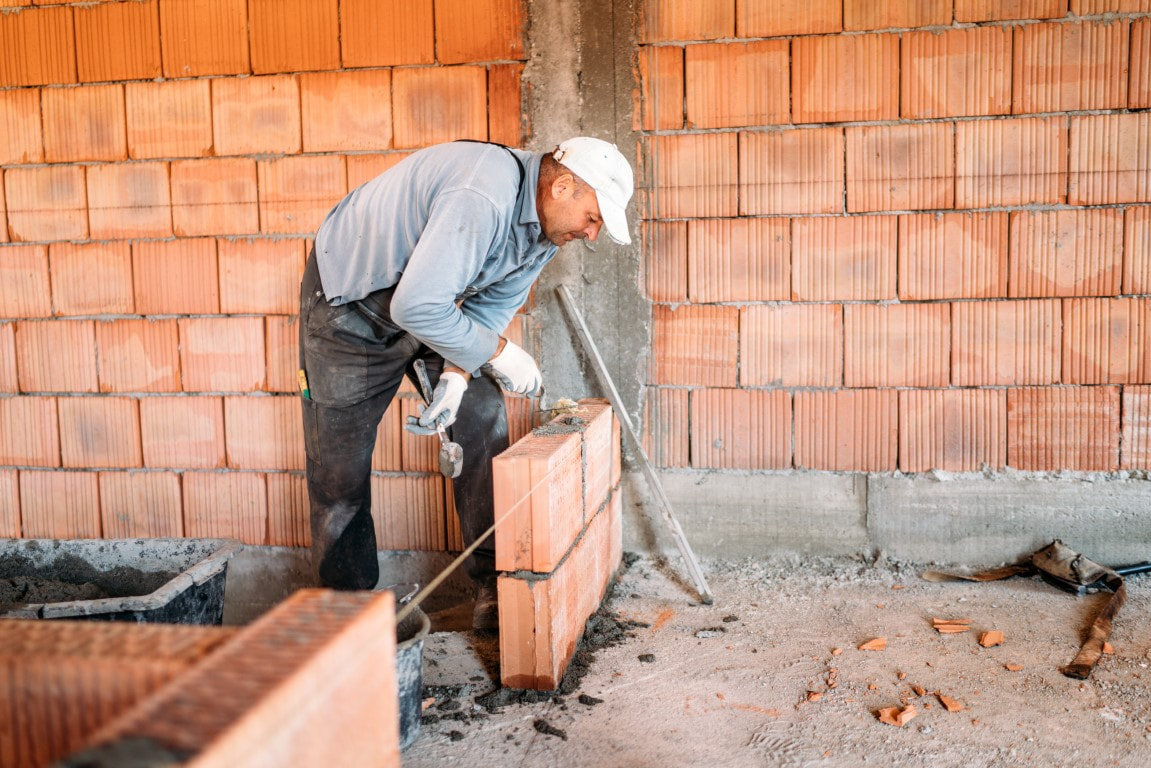Chimney Flashing and Cap Repair: Protect Your Home from Aspects
Chimney Flashing and Cap Repair: Protect Your Home from Aspects
Blog Article
Unlocking the Keys of Sustainable Masonry Building And Construction Practices for Eco-Friendly Structures
In the realm of contemporary construction, the pursuit of lasting methods has ended up being vital. Among the myriad methods to environment-friendly building, sustainable stonework construction stands out as a reliable and resilient approach that holds a wide range of untapped possibility. From the option of products to innovative building and construction strategies, the keys to attaining sustainability within masonry construction are complex and appealing. By discovering the advantages, products, techniques, and future trends of sustainable stonework, a deeper understanding of how these techniques can shape the future of eco-friendly buildings emerges.
Advantages of Lasting Masonry Building And Construction
Embracing sustainable stonework building practices not only lowers ecological impact but also supplies lasting financial advantages to building contractors and neighborhoods. By using products like recycled blocks, blocks, and rocks, contractors can significantly decrease the carbon footprint of their jobs while promoting source efficiency. Furthermore, sustainable stonework building and construction strategies, such as appropriate insulation and thermal mass residential properties, can boost energy performance within structures, causing decreased operational expenses with time.
Furthermore, the sturdiness and resilience of stonework structures contribute to long-term financial benefits. Buildings built using lasting masonry techniques commonly need less repair and maintenance, converting to cost financial savings for builders and homeowner. The longevity of masonry products likewise makes sure that structures continue to be stable and protected, minimizing the requirement for regular improvements or replacements.
Eco-Friendly Masonry Materials
Using green stonework materials is an essential action towards boosting the sustainability of building methods and reducing ecological impact while optimizing long-term financial advantages. Sustainable masonry products are sourced, created, and made use of in a fashion that decreases total environmental effect. Materials such as recycled blocks, reclaimed rock, and lasting concrete blocks are becoming increasingly preferred options for eco-conscious home builders. Recycled bricks, as an example, not just draw away waste from landfills but likewise need less energy to produce contrasted to new bricks. Reclaimed rock provides a distinct aesthetic appeal while minimizing the demand for new quarrying. Sustainable concrete obstructs integrate recycled aggregates and may include better insulation residential or commercial properties, adding to power performance in structures.
Additionally, natural materials like adobe, rammed planet, and straw bundles offer outstanding thermal mass properties, minimizing the requirement for home heating and cooling power. These materials are typically locally offered, advertising regional economic climates and decreasing transportation-related carbon exhausts. By choosing eco-friendly stonework products, building and construction jobs can dramatically minimize their environmental impact and contribute to the development of healthier, a lot more lasting constructed atmospheres.
Energy-Efficient Stonework Strategies
Energy performance plays an important function in improving the sustainability of stonework building practices. By carrying out energy-efficient stonework strategies, contractors can significantly lower the general energy go to my site consumption of a building, bring about lower operational expenses and a smaller environmental footprint. One essential energy-efficient stonework strategy is making use of thermal mass, which involves including thick materials like concrete or brick into the building's structure to take in and save heat. This helps regulate indoor temperature levels, reducing the demand for mechanical heating and cooling down systems.

Advancements in Lasting Stonework
Recent innovations in lasting stonework practices have actually produced innovative methods that are improving the building sector. One such development is the growth of self-healing concrete, which uses bacteria installed within the concrete to heal splits autonomously. This innovation not only reduces maintenance costs but additionally improves the toughness of masonry frameworks, adding to their sustainability.
An additional notable advancement is the use of recycled aggregates in stonework construction - masonry contractor. By including materials such as crushed ceramic waste or recycled glass into concrete blends, building contractors can minimize the ecological impact of building projects while keeping structural stability. This method not only diverts waste from landfills but also preserves all-natural resources, making it a vital advancement in lasting stonework building and construction
Furthermore, the assimilation of electronic layout tools, such as Structure Details Modeling (BIM), is revolutionizing the means masonry structures are prepared and constructed. BIM enables more my explanation exact estimations, reduced material wastage, and boosted energy effectiveness, ultimately causing even more sustainable building methods. These innovations collectively signify a promising future for lasting stonework building in the era of environmentally friendly structures.
Future Trends in Masonry Sustainability
With the innovative strides made in sustainable stonework my review here practices, the future trends in masonry sustainability are positioned to further transform the building and construction industry. One of the vital fads forming the future of masonry sustainability is the increased integration of innovation. Developments such as Building Information Modeling (BIM) and virtual truth simulations are being utilized to optimize masonry building and construction procedures, causing minimized material waste and boosted power performance in buildings.
Additionally, the growth of novel lasting materials is readied to play a considerable role in improving the eco-friendliness of stonework building and construction. masonry contractor. Innovations like self-healing concrete, recycled accumulations, and bio-based binders are acquiring traction for their ability to reduce ecological influence while maintaining architectural stability

Conclusion
In final thought, sustainable stonework construction methods supply countless benefits for environmentally friendly structures. By utilizing environment-friendly materials and energy-efficient methods, masonry can add to a more lasting developed environment. Innovations in sustainable stonework are continually being created to further enhance the environmental efficiency of buildings. Looking towards the future, the fad of masonry sustainability is expected to expand, resulting in more eco-friendly and energy-efficient construction techniques in the years ahead.
Report this page